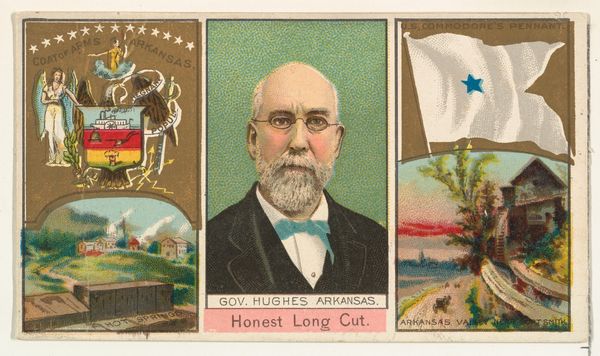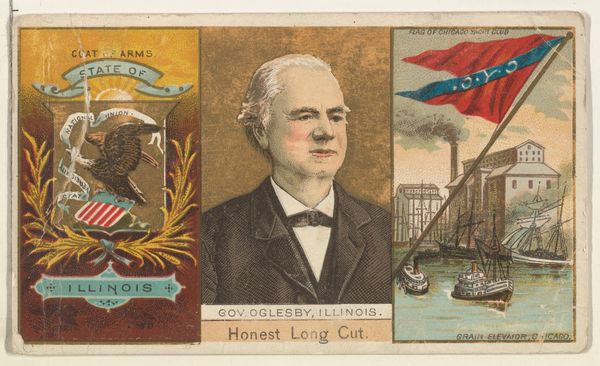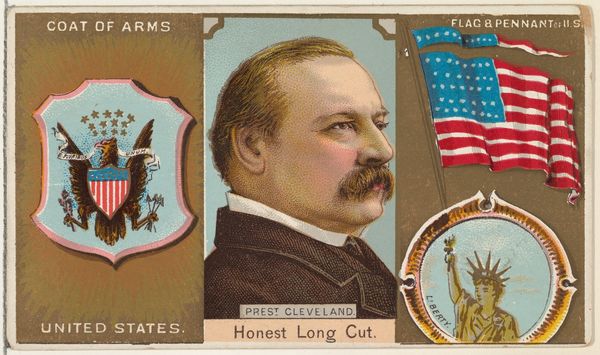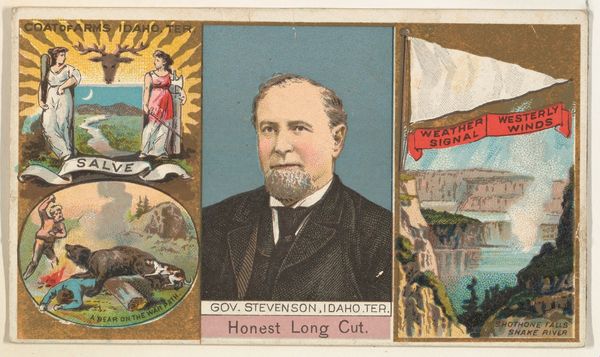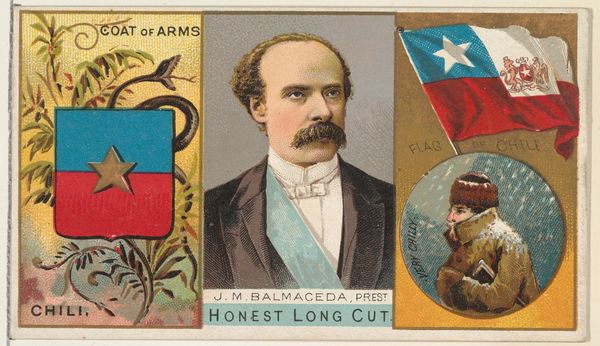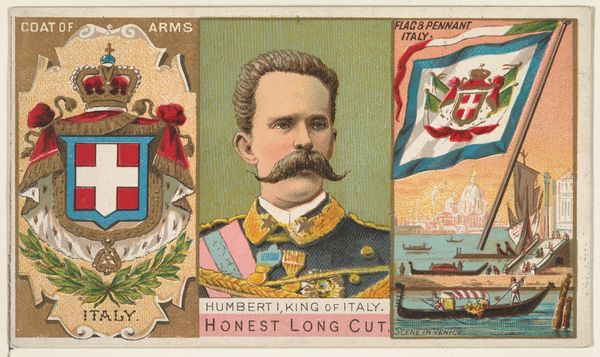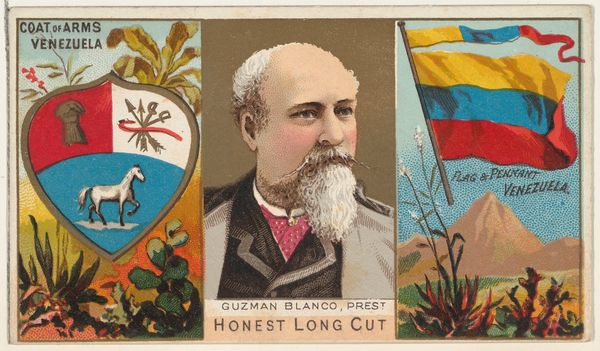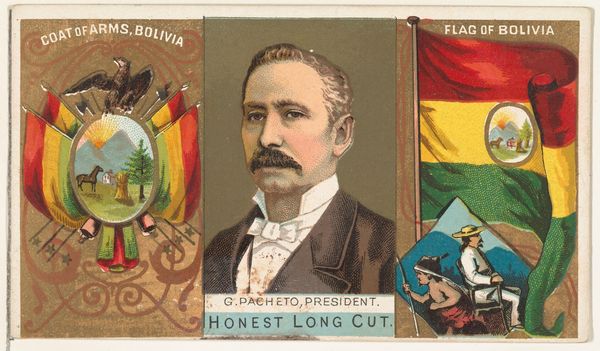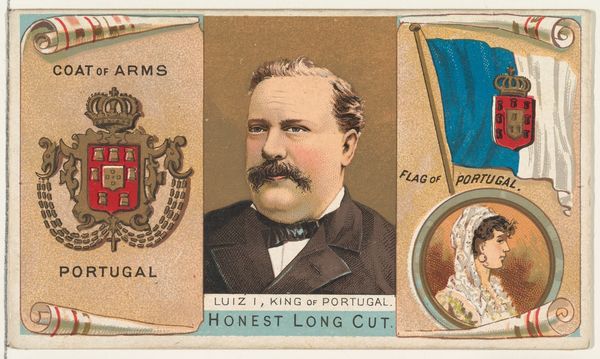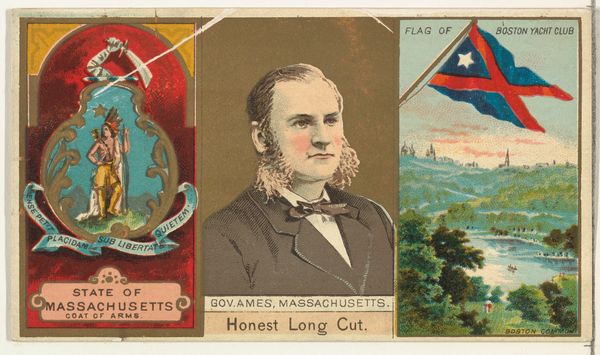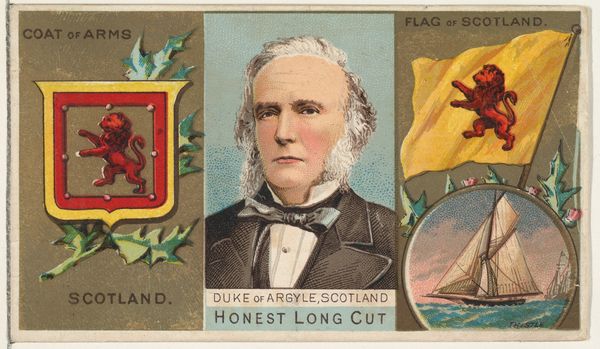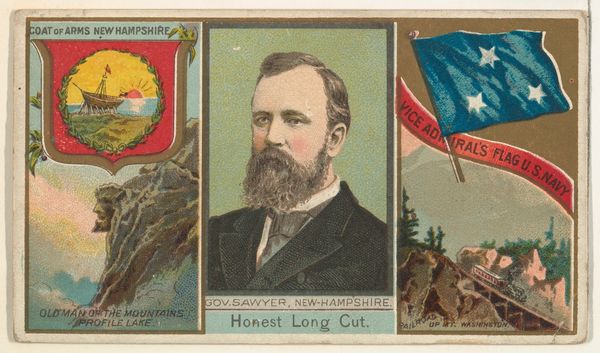
Prince Bismarck of Mecklenburg, from the Rulers, Flags, and Coats of Arms series (N126-1) issued by W. Duke, Sons & Co. 1888
0:00
0:00
drawing, print
#
portrait
#
drawing
#
art-nouveau
# print
#
caricature
#
history-painting
Dimensions: Sheet: 2 1/2 × 4 5/16 in. (6.4 × 11 cm)
Copyright: Public Domain
Curator: Before us, we have an example from W. Duke, Sons & Co.’s series “Rulers, Flags, and Coats of Arms,” this particular card from 1888 features Prince Bismarck of Mecklenburg. It's a chromolithograph, a color print produced from stone. Editor: My first thought is... busy. It's a lot crammed into a tiny space. But also oddly charming, like a little history lesson condensed into a candy wrapper. And he certainly has impressive facial hair, doesn't he? Very of-the-era! Curator: Indeed. Note how the composition is carefully segmented into three distinct registers. On either side of Prince Bismarck’s central portrait, there are two circular vignettes displaying heraldic symbols—to the left, Mecklenburg's coat of arms, and to the right, their flag, all set against a flat colored background reminiscent of Art Nouveau design. Editor: Exactly, those circles, especially, draw your eye. They frame the symbols as important elements and highlight them. Although it is a promotional card for tobacco, it is really lovely and sophisticated. I appreciate the use of strong geometric shapes alongside representational imagery. It feels like an odd, endearing fusion. Curator: It underscores a fascination with national identity, popular at the time. The choice of Bismarck as a subject, particularly with the textual addition "Honest Long Cut," elevates him—associating a figure of power with virtues and even a specific brand, functioning simultaneously as a trade card and a piece of propaganda. Editor: That makes me think about how objects like this create narratives and become historical artifacts themselves. And now here it is at the Met. The card makes you wonder about this particular time and what Prince Bismark thought of seeing himself attached to tobacco. Or not... either way, an intriguing piece. Curator: An encapsulation of intersecting themes, deftly rendered using economical yet engaging visual language, reflecting the ethos and aesthetics of its era. Editor: A window into a different time, when tobacco cards told stories, political figures advertised cigarettes, and elaborate facial hair was a sign of power. Fascinating.
Comments
No comments
Be the first to comment and join the conversation on the ultimate creative platform.
